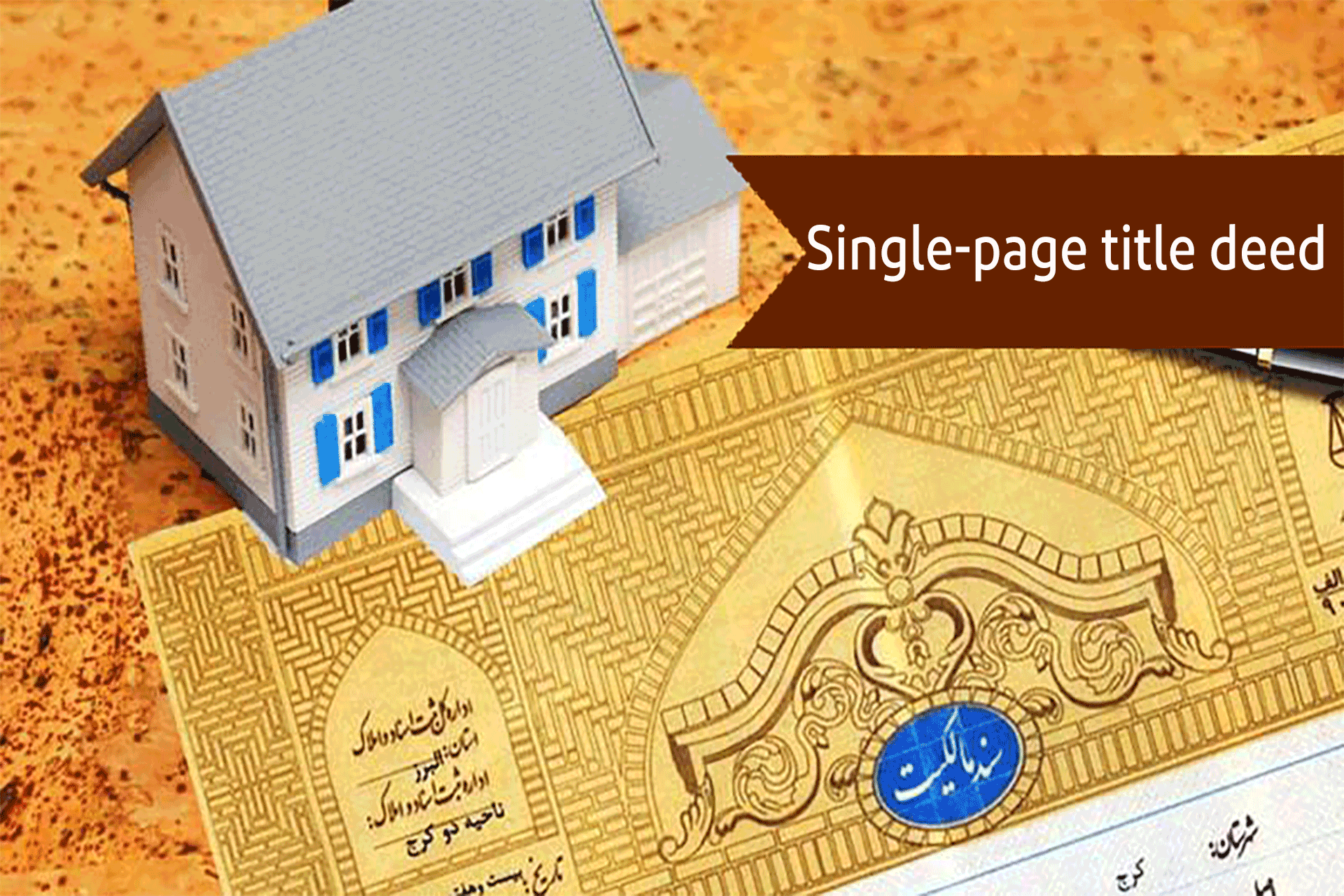A single-page title deed is one of the types of title deed that, like any other title deed, shows the ownership of the property owner, with the difference that in the past the title deed was a multi-page booklet, today its shape has changed and in the latest Its type is in the form of a single leaf.
Features of a single-page title deed:
The single-page real estate document that came into being in 1390 in terms of legibility and transparency, as well as having security parameters such as having a hologram, is an advantage that has distinguished this document from the past.
The issuance of these documents in the registry office is not prepared manually like old documents, their printing process is done mechanized and electronically, this is one of the best features of new documents that the problem of bad handwriting or illegibility Solve the document and write frequent corrections on the back of the document and you can easily see the information inside the document.
All the details of the property and the owner are clear and legible, so it is easy for people to read and control the single-page document, which is one of the reasons why it is difficult to forge these documents. A single-page title deed has an accurate sketch and more detailed information than older documents, so there are no more problems with ambiguity in property size and property encroachment.
In a single-page real estate deed, like the old deed, there are not many pages and columns for transfers, but a small part is intended for this purpose, this is because in the new system, the issued version of the documents should remain in the hands of the people for a long time, because it is not good for the long-term survival of the ownership document in the hands of the owner. Therefore, according to the issued regulations, the notaries are obliged to take a single-page property document from the seller after each transfer of the property, and after inserting the transfer in its place, instead of delivering it to the buyer, the document to be replaced. Submit to the relevant registry office and a new single-deed property document is issued in the name and details of the new owner.
The previous purchases and sales, which were known and contained in the previous documents, are not included in the new documents. The comment is inserted on the back of the single-page document and is returned to the owner.
Also, the possibility of including the number of such transactions on the back of a single-page title deed is limited, and after completing and filling the special place, the title deed must be replaced and the possibility of attaching and attaching the attachment that already existed in the booklet documents. It has been destroyed in these documents.
Reducing intercity travel due to people not having to go to the registry office to change their documents is another feature of a single-page title deed. At the time of the issuance of the title deed, all the registration of the title deed was done by the owners themselves and by referring to the property and deed registration offices, and it is still done. In the case of a single-deed property deed, it is planned that in the case of transfers, this will take place at the same meeting as the two parties to the transaction in the notary public’s office. After preparing and signing the form. The rest is done by the notaries and the buyers do not go to the registry offices.
This planning will reduce people’s intra-city travel and reduce the presence of people in registries across the country. It will also make the registration process smoother in the registry offices.
Issuance of separate ownership documents for each owner, although before the issuance of a single-page title deed, common property owners could obtain a separate title deed for their common share by going to the registry office, but in most cases this the work was not done and the common property had a title deed, which was in the hands of one of the owners, and the other partners did not have a title deed. Unfortunately, since the culture of participation is not common in our country, this situation caused problems in participatory real estate.
Before the title deed becomes single-page, among the common owners, in cases of dispute, the partner who acquired the title deed prevents other partners from enjoying the rights and benefits of the title deed. Deprived partners were forced to make frequent and perhaps futile appeals to the registration and judicial authorities to exercise their rights. In most cases, due to the lack of a common document in their hands, they failed to realize the right. This problem has been solved in a single-page real estate deed, because in each change, the ownership of the deed is changed and a separate deed is issued in the name of each of the common partners and in proportion to his share, and it is sent to his postal address.
 English
English
 فارسی
فارسی 



